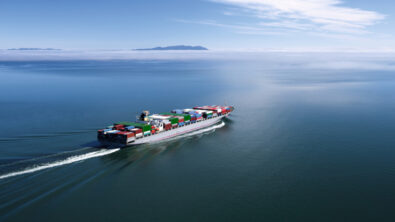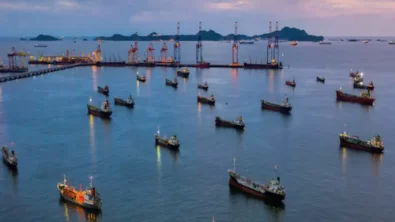How can the global shipping industry become more sustainable?

Global shipping activities are estimated to contribute 2-3% of total global carbon emissions annually. As temperatures continue to rise around the world, it becomes increasingly important that the marine industry does its part in decreasing its environmental impact. As part of this effort, the International Maritime Organization set aggressive emission reduction targets in 2018 of 40% by 2030 and 70% by 2050 (based on 2008 data).
How can the industry meet these ambitious targets? The answer involves digitalization across both operations and ship design.
Short-Term Steps to More Sustainable Shipping Operations
The entire global fleet cannot be replaced overnight; decommissioning ships en masse would not be a sustainable (or realistic!) choice. The key to creating a more impact-conscious future for these vessels is in optimizing their operations. This can be done in several ways through collaboration between operations personnel and ship designers to:
- Evaluate whether vessels are running at their optimal speed
- Check that engines are optimized for their fuel grade and operating environment
- Examine whether power consumption of onboard systems is as expected
The use of a digital twin is vital to exploring this connection between as-designed and as-operated. It creates an integrated environment that can examine ways to balance competing requirements to find the best and most sustainable solution.
The Long-Term Approach to More Sustainable Shipping Operations
Longer-term, design decisions will be key in determining the environmental impact of vessels and whether the global shipping industry as a whole meets the IMO’s ambitious targets. Prioritizing designs that use cleaner fuels, lighter materials and more advanced operations solutions will be necessary to move the industry toward a more sustainable future.
Identifying those new designs requires new design practices and tools. Vessels are set to only become more complex, which means that there will be more and more requirements that need to be taken into consideration and satisfied in each design.
The Tools Needed for More Sustainable Shipping
These added requirements will make it more important than ever for the global shipping industry to move toward digitalization and the use of a comprehensive digital twin. Doing so creates an integrated environment to assess the many systems and elements at play. Plus, advanced simulation technology allows novel designs to be tested more efficiently than model-scale prototypes in a variety of operating conditions.
To learn more about the technology and processes that are paving the way for the global shipping industry to reduce its environmental impact, download our free brief on sustainability in the marine industry from naval architect and industry-leading analyst Monica Schnitger of Schnitger Corporation.

